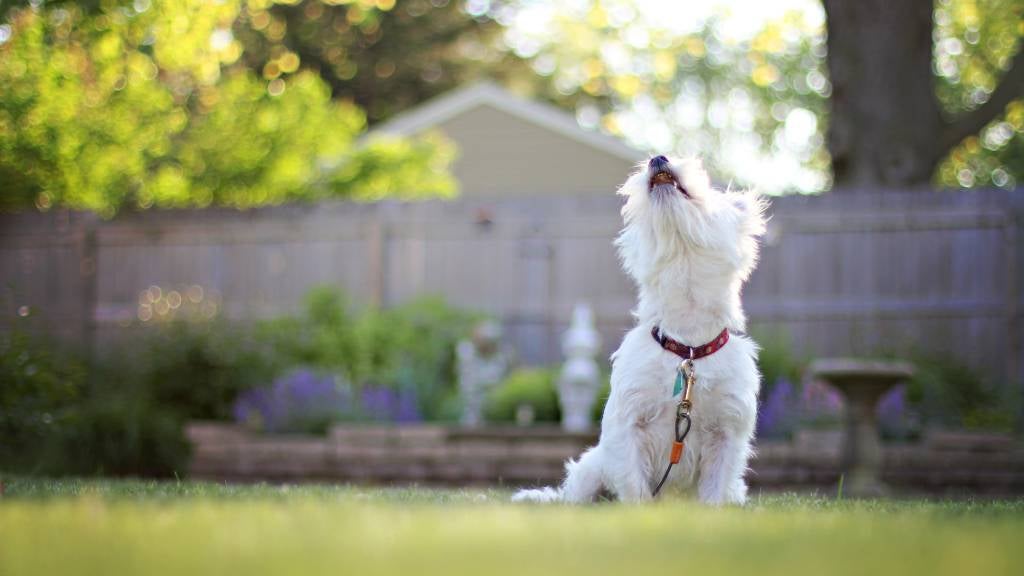Interpreting animal noises to better understand your pet

For most of us, our pets are part of the family. But how much easier would life be if we could understand them as easily as we understand our family or friends? Animals use a specific cadence and speed to communicate and explain what they want – read on to help unpack and understand the meaning behind some of our pets more common noises.
Interpreting your dog’s bark
Varying the pitch, duration and frequency of their bark is your dog’s way of trying to tell you something. It might be that they are bored or lonely, that there’s a possum in the tree, or that they are ready for some exercise or play.
Here are some common bark variations, and what they mean.
1. Short barks
Repeated short, sharp barks are the most common type of dog bark – and you are undoubtedly already very familiar with them, because this is the bark you hear when you go for a walk with your dog around the neighbourhood. It’s the sound of other dogs in their houses telling their owners that there’s another dog outside. In other words, it’s a way for your dog to bring your attention to something they think is important.
2. Angry barks
You might also hear this type of bark when out for a walk with your dog, especially if you get too close to another dog’s property. Repeated harsh barks – or ‘angry barks’ – are a warning for you to watch out. Your dog wants something or someone to stay away from them, so pay attention their warning and keep an eye out for potential dangers.
3. Ruff ruff!
This sound will put a smile on every owner’s face. The playful “Arf!” or “Ruff ruff!” is your dog telling you they want to play. These sounds are often heard in tandem with play bows, a high wagging tail and short bursts of sprinting around (aka ‘zoomies’).
4. Bark and growl
While an angry bark is usually just a warning, a more menacing bark followed immediately by a growl means your puppy isn’t playing anymore. This is a clear sign they are unhappy with something approaching and using these noises to tell the perceived danger to go away.
5. Single barks
Single barks with long, empty pauses between them usually mean one of two things: “I’m bored” or “I’m lonely” – or both. Barking is a way for bored dogs to entertain themselves if they have no other mental stimulation around (i.e., someone to play with or chew toys). It can be a hard habit to break, so if you notice your dog doing this type of bark, make sure they are getting enough attention and activity.
Interpreting your cat’s meows
In much the same way as a dog will vary the pitch, speed and intonation of its bark to mean different things, cats use their voices to meow, hiss and purr to communicate their desires. Additionally, a cat’s body language can tell you a lot about what they want – so it’s important to factor in both the sounds they make and the way their body acts in order to understand their needs.
While we could write an encyclopaedia about all the different noises and variations of body languages that cats display, here are some of the most common meows to be aware of.
1. Short meow
The most basic sound that cats make, a short meow when your cat sees you is simply their way of saying “Hello!”. Think nothing of it other than your cat being happy that you are around.
2. Repeated meows
Multiple short meows in a short space of time mean your cat is not only happy to see you, but they love you being around. It shows they have plenty of trust in you and are comfortable that you’re in close proximity, so why not give them a pat in return for their vocal affections?
3. Long meow
A drawn-out and mid-pitch meow usually means your cat wants something. Be warned: this is not a request, it’s a demand! They will often use long meows to ask for food or attention, so ignore them at your own risk.
4. Hissing
Just as dogs growl, cats hiss when they are agitated or upset by something. In some cases, cats hiss when they are afraid – typically when they encounter an unfamiliar person or animal in their familiar space.
5. Purring
One of the most beautiful animal sounds in the world, a purr means your cat is especially content and at peace. You’ll often hear it when they are snuggled up in their bed or sitting on your lap enjoying a relaxing cuddle.
Help your pet receive the quality care they deserve with up to $12,000 a year towards their eligible vet bills through Guardian Pet Insurance. Get a quote today.
20 Nov 2022